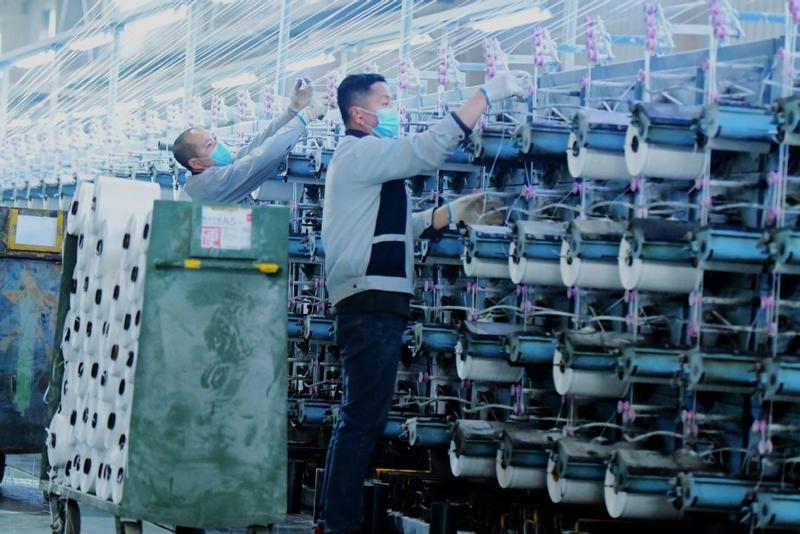 In this undated file photo, workers spin yarn at a foreign-invested tarp manufacturing unit in Qingdao, Shandong province. (PHOTO BY YU FANGPING / FOR CHINA DAILY)
In this undated file photo, workers spin yarn at a foreign-invested tarp manufacturing unit in Qingdao, Shandong province. (PHOTO BY YU FANGPING / FOR CHINA DAILY)
JINAN-Entrepreneur Yun Hwang-suk from the Republic of Korea recently injected US$1.5 million into his electronics company in Shandong province.
The new funds will be used for product research and development and the upgrading of the integrated inductor production line for the joint venture in the coastal city of Weihai.
Yun's confidence in the business is well-founded. Despite the COVID-19 pandemic, the company's sales revenue increased by 100 million yuan (US$15.5 million) to 210 million yuan in 2020.
He attributed the firm's success to local supportive policies and opportunities brought by the Chinese market, noting that supportive policies have covered almost every aspect of life, including housing, medical treatment and schooling for youngsters.
"Weihai has opened its arms to foreign investors," Yun said.
China bucked the global downturn and recorded a 4 percent growth in FDI inflows, overtaking the United States as the largest recipient in 2020, according to a report released by the United Nations Conference on Trade and Development (UNCTAD) in late January
Despite the challenges brought by COVID-19 and the global economic recession, China became the world's top destination for new foreign direct investment (FDI) last year, and it has introduced a series of policies to further improve its business environment.
The country bucked the global downturn and recorded a 4 percent growth in FDI inflows, overtaking the United States as the largest recipient in 2020, according to a report released by the United Nations Conference on Trade and Development (UNCTAD) in late January.
FDI into China in actual use expanded 6.2 percent year-on-year to hit a high of nearly 1 trillion yuan in 2020, the Ministry of Commerce said. In US dollar terms, the inflow rose 4.5 percent year-on-year to US$144.37 billion.
ALSO READ: Attracting more high-quality foreign investment crucial task
In the provincial capital Jinan, German forklift manufacturer Kion Group invested 1.34 billion yuan to start a local business. Construction of the plant began in October, with output eventually expected to be 40,000 forklift trucks per year. The first phase of the project will be finished by November, with annual production capacity reaching 26,000 by then.
"China has quickly recovered from the coronavirus, and as one of the fastest-growing markets globally, it plays a key role in our strategy," said Kion CEO Gordon Riske.
China is making greater efforts to reduce barriers to foreign investment, with more free trade zones (FTZs) established and the Foreign Investment Law passed.
From 2016 to 2020, 17 pilot FTZs were newly built, bringing the total number in the country to 21.Pilot FTZs will be granted greater autonomy in decision-making processes.
Large-scale exhibitions like the 2020 China International Fair for Trade in Services and the third China International Import Expo were also held as scheduled-an indication of China's determination to open up at an even higher level.
Zhan Xiaoning, an official in charge of investment and enterprises at UNCTAD, said China's rapid economic recovery and investment facilitation policies played a crucial role in boosting foreign investment.
China was likely the only major economy to post growth in 2020, with its GDP expanding 2.3 percent to exceed the 100-trillion-yuan threshold for the first time.
READ MORE: Experts: High-level development outweighs GDP target
"While ensuring the strict prevention and control of the pandemic, China has encouraged enterprises to resume work and production, which not only guaranteed the industrial and supply chains of foreign enterprises, but also boosted their confidence to invest in China," Zhan said.


